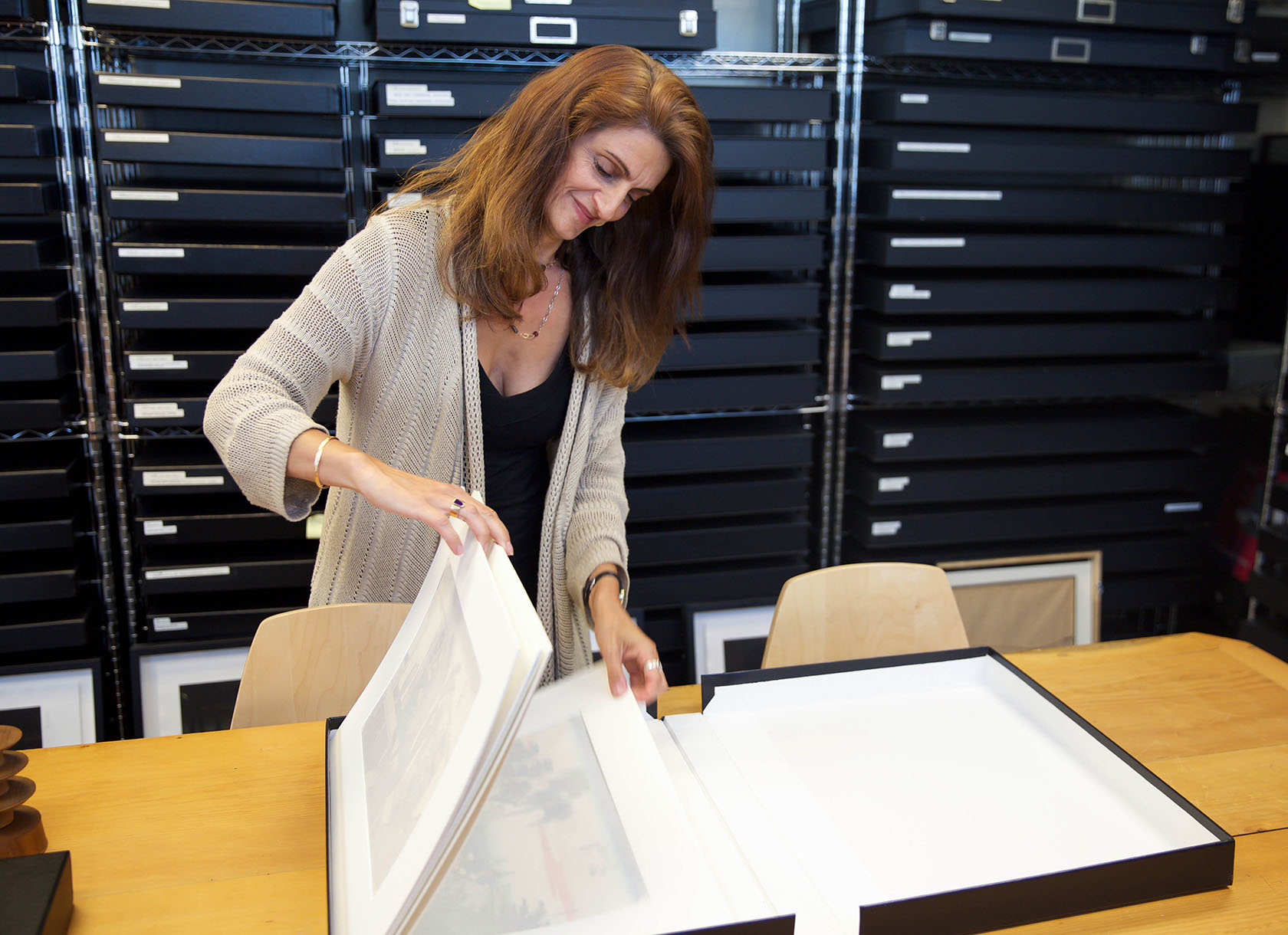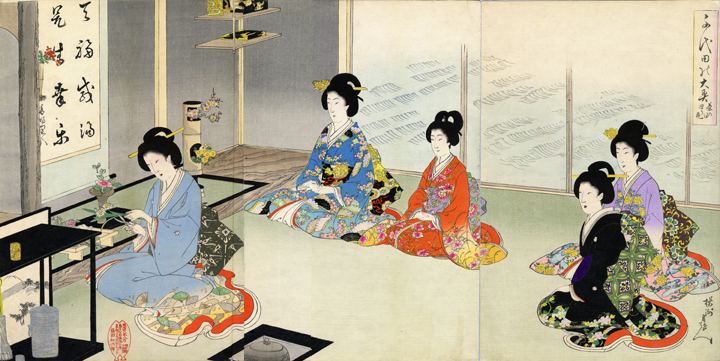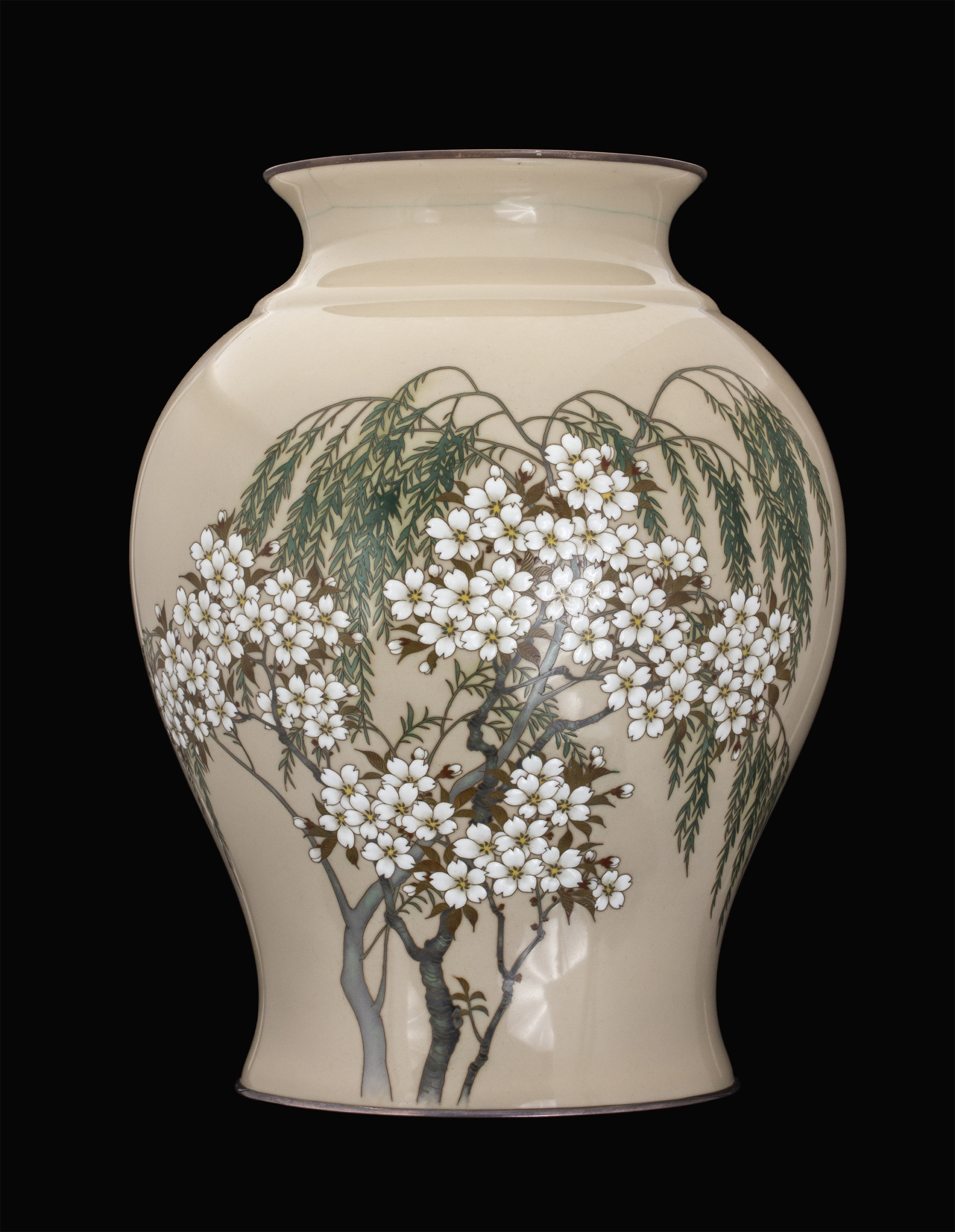
Since joining Scripps as Gabrielle Jungels-Winkler Curator of Academic Programs and Collections, Meher McArthur has been serving up 15-minute talks on a single work of art from the College’s permanent collection in her “Quick Bite of Art” lunchtime series of object-based talks. “Even though we are all at home now, we can still get to know the artwork in the Scripps collection,” says McArthur. “Looking at works of art and learning about them can be a soothing distraction for us all right now, and, hopefully, seeing some of these wonderful works of art online will interest our community in finding out more about our collection and about art as a whole.”
Now a virtual experience, McArthur, an Asian art historian by training, shares two of her favorite Japanese pieces from the collection. These elegant works of art both celebrate spring, the beauty of nature, and the inevitability of change, and offer us a balm for the spirit as we collectively experience the changes in the season and in our lives.

Chikanobu Chiyoda Inner Palace: No. 20 Flower Arranging in Turn (1895), Ink and colors on paper 13 7/8 in. x 28 1/16 in. Purchase made possible by the Aoki Endowment. Scripps College, Claremont, CA
Chiyoda Inner Palace: No. 20 Flower Arranging in Turn
By Yoshu Chikanobu (1838-1912), Japan, 1895
Woodblock print on paper
As we spend more time cooped up indoors, we seem to be increasingly treasuring our moments in nature, bringing them home on our phones and sharing these moments with others. The secondary experience of nature is something I’m reading about in my current research on the Japanese fascination with nature and the four seasons for the exhibition I am planning for the Williamson Gallery in the fall. For over a thousand years, the Japanese have been masters of secondary nature, recreating the natural world in ikebana floral arrangements, gardens, screen paintings, and kimono designs.
During the Heian period (794-1185), members of the Imperial Court rarely ventured outside, only experiencing nature through screen paintings and their palace gardens. Even so, they composed poetry laden with natural themes, many of which became encoded in different aspects of Japanese culture. In this print by Yoshu Chikanobu, a group of 19th-century court ladies is surrounded by nature indoors: the ikebana in the alcove, the waves on the screen doors, and the flowers on their kimono.
Finding ways to live close to nature even when we can’t be out enjoying it is clearly something that we humans need to soothe our souls and heal our hearts.

Ando Jubei Cloisonne Vase, c. 1912 Enamel on metal 13 x 10 1/2 in. Gift of the Turicchi Family and WorldBridge, LLC Scripps College, Claremont, CA Photo by Jan Blair
Cloisonné enamel vase
Ando Jubei (1876-1953), Japan, circa 1912
Enamel on Metal
The cherry blossoms (sakura) are blooming in Japan right now, which is a major cultural event: Instead of weather forecasts, TV stations broadcast cherry blossom forecasts so people know where the flowers are blooming most fully at any time.
Three years ago, I was in Japan with a museum tour and we landed in Kyoto at “mankai,” the moment when the blossoms are at their fullest. It was then that I truly understood what the fuss was about. The blooms were spectacularly full and light, and the mood of everyone viewing them was joyful. We were all sharing a moment of great beauty. For more than a millennium, the Japanese have loved sakura because the flowers bloom for a short, glorious time, and then their petals scatter in the wind—a reminder of the transience of life and the Buddhist concept of impermanence. Just as we should relish the moment of the full bloom because the moment will pass, we should also realize that dark, difficult moments do pass as well.
Let us celebrate this very Japanese flower with this elegant cloisonné enamel vase by Ando Jubei (c.1912) from the Scripps College collection. It depicts cherry blossoms with a willow tree, two Japanese symbols of spring as a season that always brings beauty and hope.

